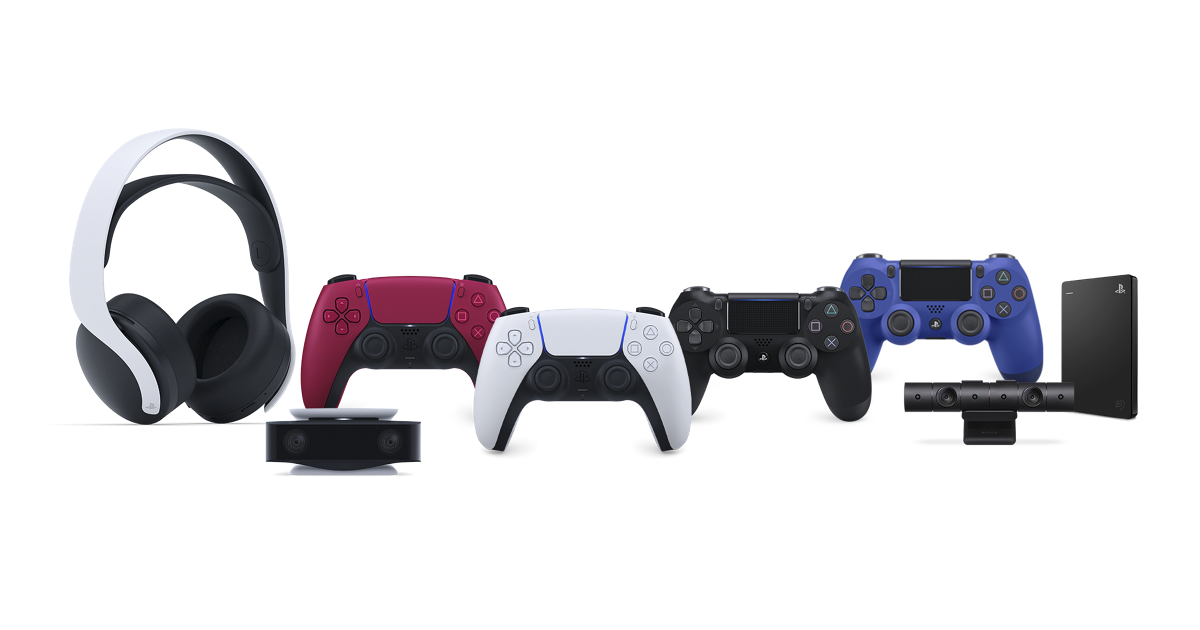GAF machine
Member
2005 -- A patent application is filed for a PSP DualShock dock. The filing was made with the expectation that PS1/PS2 games would be "ported for execution on the portable gaming platform"; so it would be ideal if "the user can utilize substantially, if not identically, the same control sequence as used with the console system" to play them on the go.
2006 -- Ken Kutaragi files two patent applications. The first is for a PSP successor in the form of a game controller. The second is for using the game controller as a lift-to-wake universal remote. Gaming on the controller is limited to Remote Play, cloud and downloadable mini-games (e.g., PS Minis and PS Mobile for Android type games) playable from internal storage. It was eventually shelved along with the DualShock dock and ultimately abandoned in favor of its derivative, the PS Vita and alternative, the Xperia Play.
2014 -- Gaikai's David Perry is interviewed:
Do you ever wish the Vita had some extra shoulder buttons to match the DualShock?
Yeah, that's what we need. I agree. It's funny because you know I hope we get involved in more and more conversations as we become integrated into more things at Sony. These are the kind of conversations I really want to have.
2015 -- Gaikai is a few years into its integration with SIE and the DualSense is in development. It's also around this time that SIE files a patent application for a DualShock-like handheld.
2016 -- Kutaragi's remote play controller application gets updated from 'abandoned' status to 'active' status. The change in status comes when PS Vita is shaky and on the ropes.
May 18, 2019 -- A patent application is filed for a 'Network Connected Controller for Direct to Cloud Gaming'. David Perry is listed as one of its co-inventors, despite having left SIE in 2017. Sections of the application say that the device is DualShock-like, has an integrated display and connects directly to cloud-gaming servers over Wi-Fi. This application is published two days after Kutaragi's newly active remote play controller application is 'granted' (i.e., protected against infringement).
May 21, 2019 -- Jim Ryan tells investors/analysts that SIE plans to "maximize off-console opportunity" as a feature of PS Now. This comes three days after Perry et al and Kutaragi's fundamental patent applications for Project Q'taragi clear.
2021 -- A former Qualcomm Sr. System Test Engineer who also worked on Android platforms (Rui Yang) is listed in a patent application as co-inventor of a motion-sensing 'Universal control' feature that builds on Kutaragi's old lift-to-wake universal remote control application. The new application suggests that Project Q will be able to display the location of different devices and control them.
2023 -- Video surfaces of Project Q running Android. SIE choosing Android makes bringing mobile games to the handheld highly likely, and makes the approval of VoWifi apps like NumberSync a strong possibility. Project Q is poised to be a precision mobile gaming device, while facilitating the kind of communication that Kutaragi was once wary of.
Beyond 2023
Jim Ryan believes that "cloud technology will become a meaningful component of how gamers access games between 2025 and 2035".
Remote Play has its place, but SIE didn't acquire Gaikai and buy select OnLive patents just for Remote Play to be Project Q's sole purpose. Remote Play is just the start. Cloud-gaming is next, with shared multi-player gaming and Android gaming to follow.
Project Q is likely to gradually become a standalone handheld that competes against Switch 2 on price and against "Keystone" on features by leveraging Share Play, Share Screen and streaming to WebViews inside dedicated versions of social apps as product differentiators.
2006 -- Ken Kutaragi files two patent applications. The first is for a PSP successor in the form of a game controller. The second is for using the game controller as a lift-to-wake universal remote. Gaming on the controller is limited to Remote Play, cloud and downloadable mini-games (e.g., PS Minis and PS Mobile for Android type games) playable from internal storage. It was eventually shelved along with the DualShock dock and ultimately abandoned in favor of its derivative, the PS Vita and alternative, the Xperia Play.
2014 -- Gaikai's David Perry is interviewed:
Do you ever wish the Vita had some extra shoulder buttons to match the DualShock?
Yeah, that's what we need. I agree. It's funny because you know I hope we get involved in more and more conversations as we become integrated into more things at Sony. These are the kind of conversations I really want to have.
2015 -- Gaikai is a few years into its integration with SIE and the DualSense is in development. It's also around this time that SIE files a patent application for a DualShock-like handheld.
2016 -- Kutaragi's remote play controller application gets updated from 'abandoned' status to 'active' status. The change in status comes when PS Vita is shaky and on the ropes.
May 18, 2019 -- A patent application is filed for a 'Network Connected Controller for Direct to Cloud Gaming'. David Perry is listed as one of its co-inventors, despite having left SIE in 2017. Sections of the application say that the device is DualShock-like, has an integrated display and connects directly to cloud-gaming servers over Wi-Fi. This application is published two days after Kutaragi's newly active remote play controller application is 'granted' (i.e., protected against infringement).
May 21, 2019 -- Jim Ryan tells investors/analysts that SIE plans to "maximize off-console opportunity" as a feature of PS Now. This comes three days after Perry et al and Kutaragi's fundamental patent applications for Project Q'taragi clear.
2021 -- A former Qualcomm Sr. System Test Engineer who also worked on Android platforms (Rui Yang) is listed in a patent application as co-inventor of a motion-sensing 'Universal control' feature that builds on Kutaragi's old lift-to-wake universal remote control application. The new application suggests that Project Q will be able to display the location of different devices and control them.
2023 -- Video surfaces of Project Q running Android. SIE choosing Android makes bringing mobile games to the handheld highly likely, and makes the approval of VoWifi apps like NumberSync a strong possibility. Project Q is poised to be a precision mobile gaming device, while facilitating the kind of communication that Kutaragi was once wary of.
Beyond 2023
Jim Ryan believes that "cloud technology will become a meaningful component of how gamers access games between 2025 and 2035".
Remote Play has its place, but SIE didn't acquire Gaikai and buy select OnLive patents just for Remote Play to be Project Q's sole purpose. Remote Play is just the start. Cloud-gaming is next, with shared multi-player gaming and Android gaming to follow.
Project Q is likely to gradually become a standalone handheld that competes against Switch 2 on price and against "Keystone" on features by leveraging Share Play, Share Screen and streaming to WebViews inside dedicated versions of social apps as product differentiators.
Last edited:













